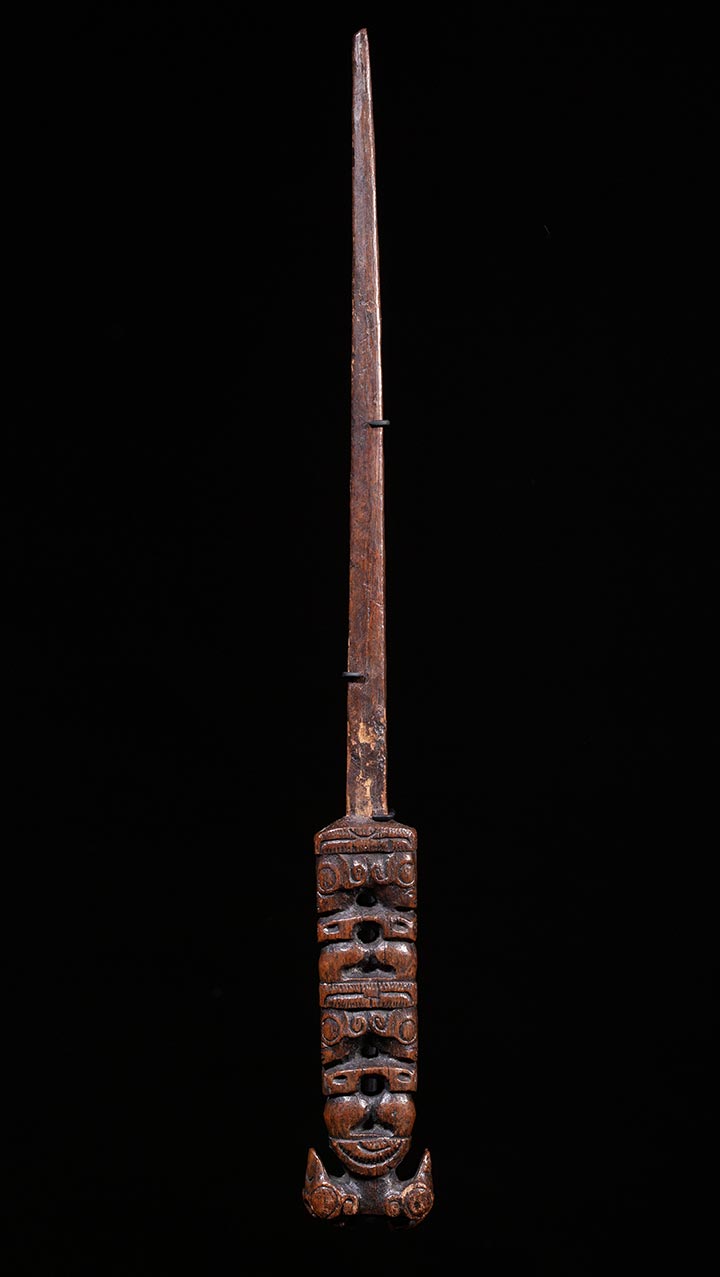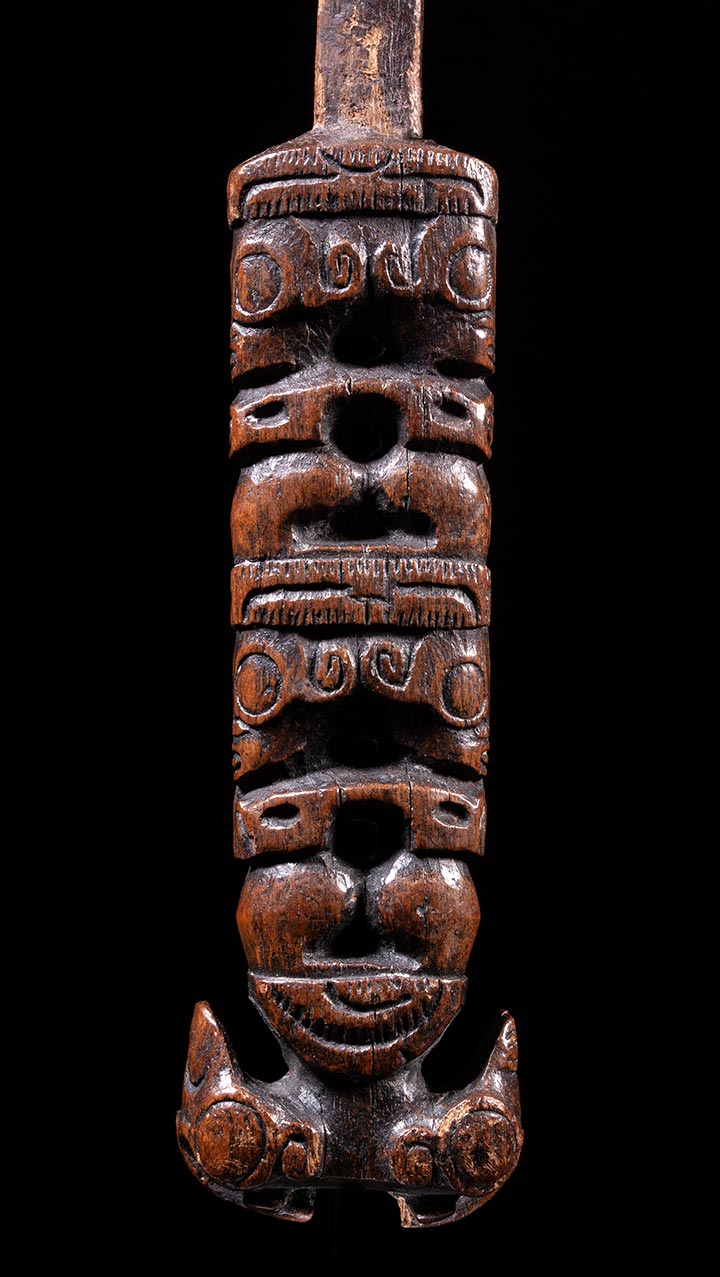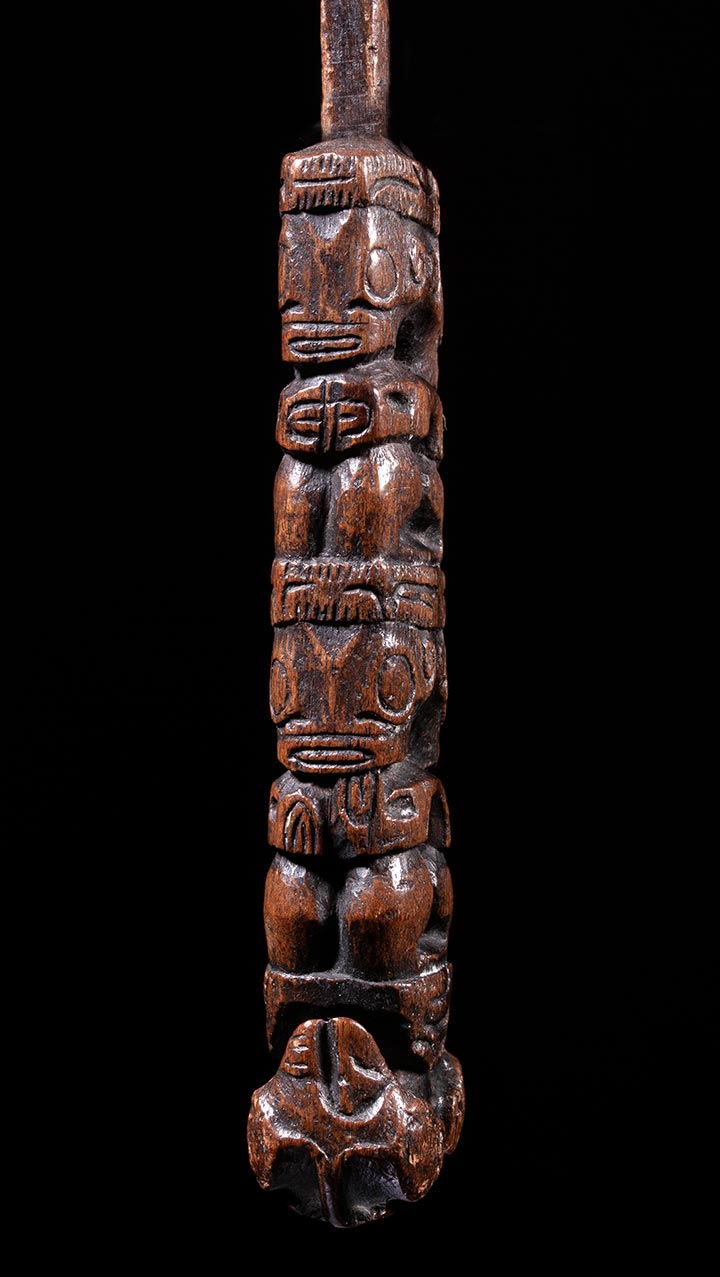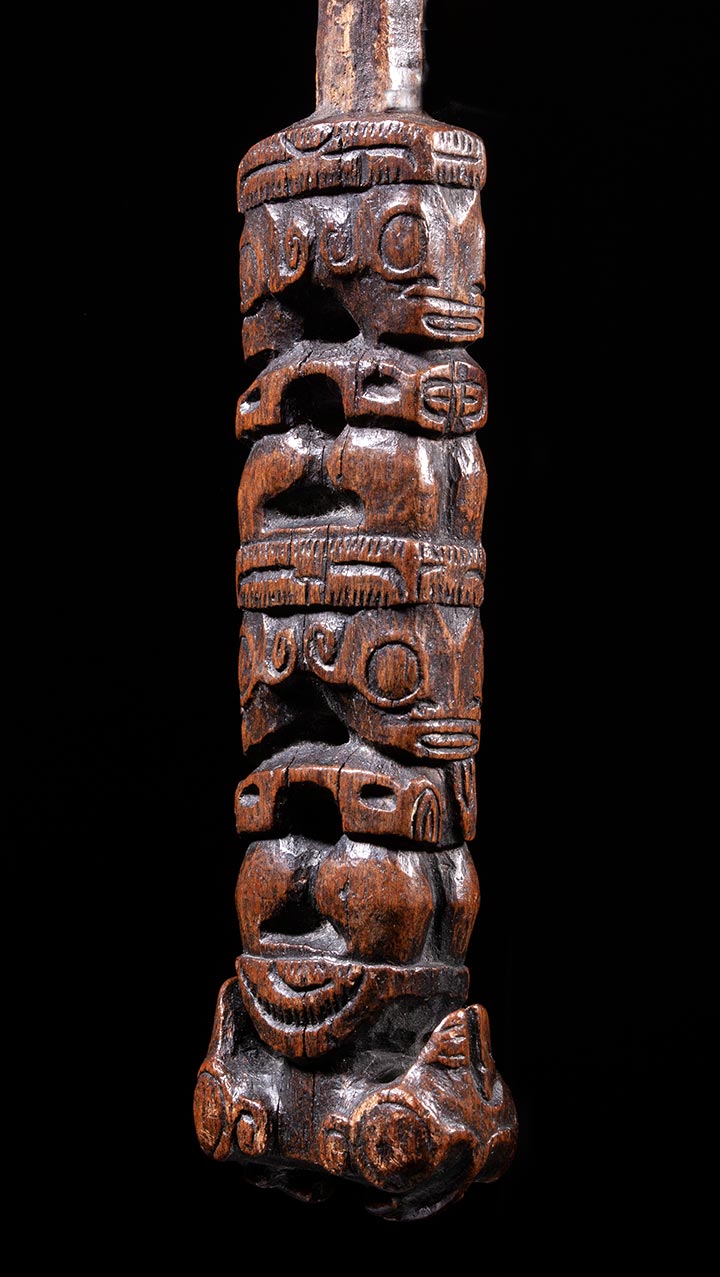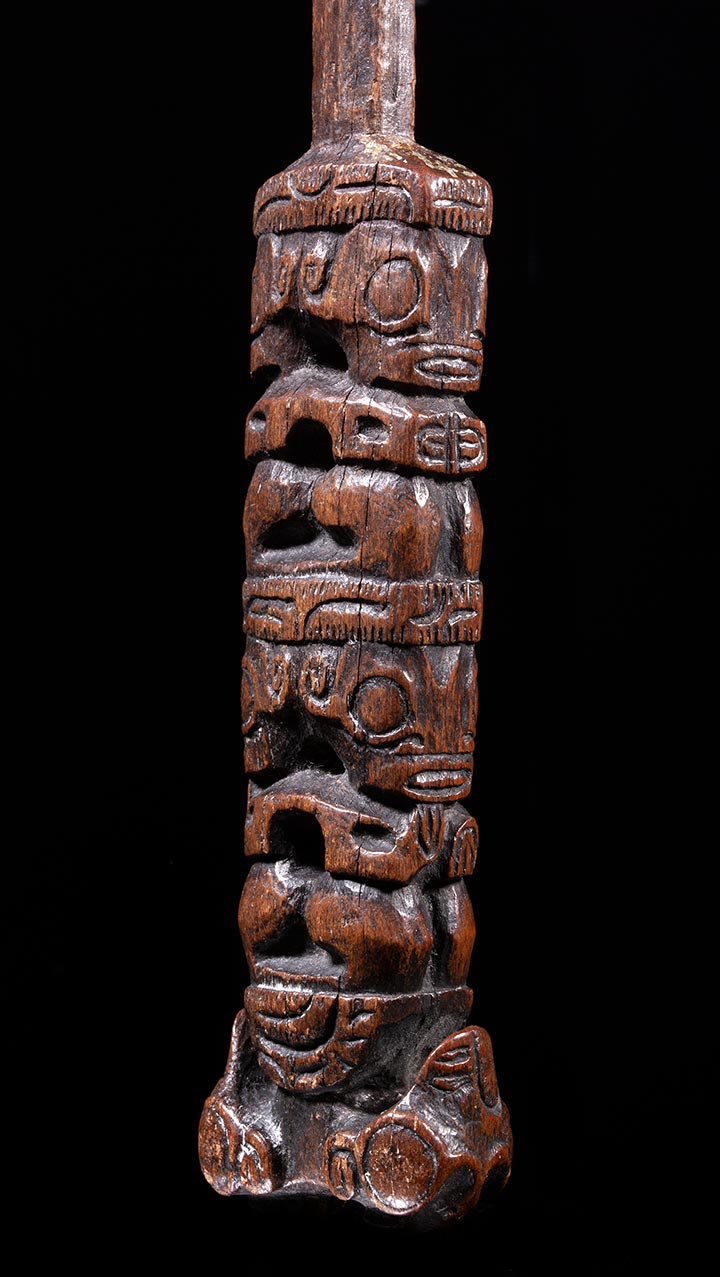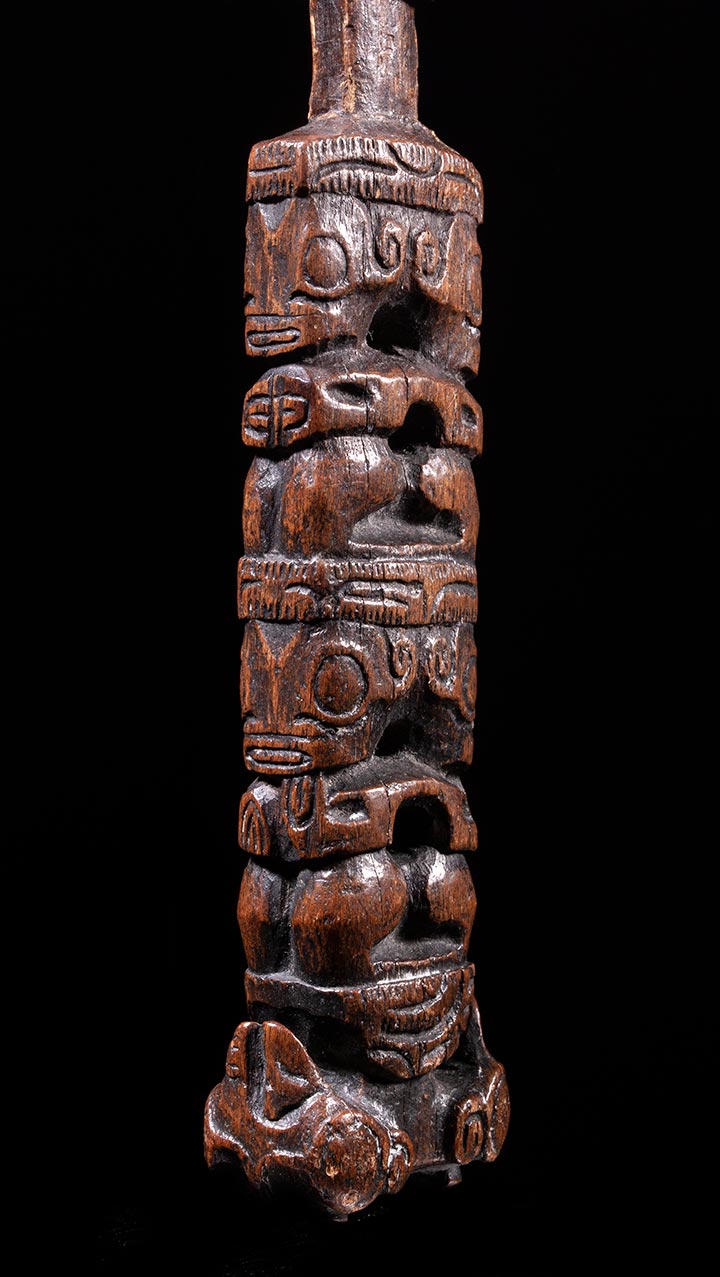Wooden Fan Handle
Marquesas Islands
19th c or before
Provenance: Grace Goldberg collection, Harrison, NY, acquired in 1970 from Bobbi Nochimson- Entwistle. By descent to family member
In the Marquesas Islands fans were used as important ceremonial objects in various rituals and dances. They were often held by dancers or placed on the ground as a decorative element during performances. This handle is carved with two sets of Janus figures standing back-to-back. They are known as tiki figures, and they represented deities or ancestral spirits that were believed to protect the owner of the fan from negative energies or spirits. The tiki figures were often depicted in a stylized, abstract form, with exaggerated features and bold lines. This style of carving was meant to convey the power and importance of the figures, as well as their connection to the spiritual realm. The figures standing back-to-back were often seen as a representation of the balance between male and female energies, which was an important aspect of Marquesan cosmology. The Marquesan’s believed that all things were made up of both male and female elements, and that maintaining a balance between these forces was essential for spiritual harmony.
Wooden Fan Handle
Marquesas Islands
19th c or before
Provenance: Grace Goldberg collection, Harrison, NY, acquired in 1970 from Bobbi Nochimson- Entwistle. By descent to family member
In the Marquesas Islands fans were used as important ceremonial objects in various rituals and dances. They were often held by dancers or placed on the ground as a decorative element during performances.
This handle is carved with two sets of Janus figures standing back-to-back. They are known as tiki figures, and they represented deities or ancestral spirits that were believed to protect the owner of the fan from negative energies or spirits. The tiki figures were often depicted in a stylized, abstract form, with exaggerated features and bold lines. This style of carving was meant to convey the power and importance of the figures, as well as their connection to the spiritual realm. The figures standing back-to-back were often seen as a representation of the balance between male and female energies, which was an important aspect of Marquesan cosmology. The Marquesan’s believed that all things were made up of both male and female elements, and that maintaining a balance between these forces was essential for spiritual harmony.



